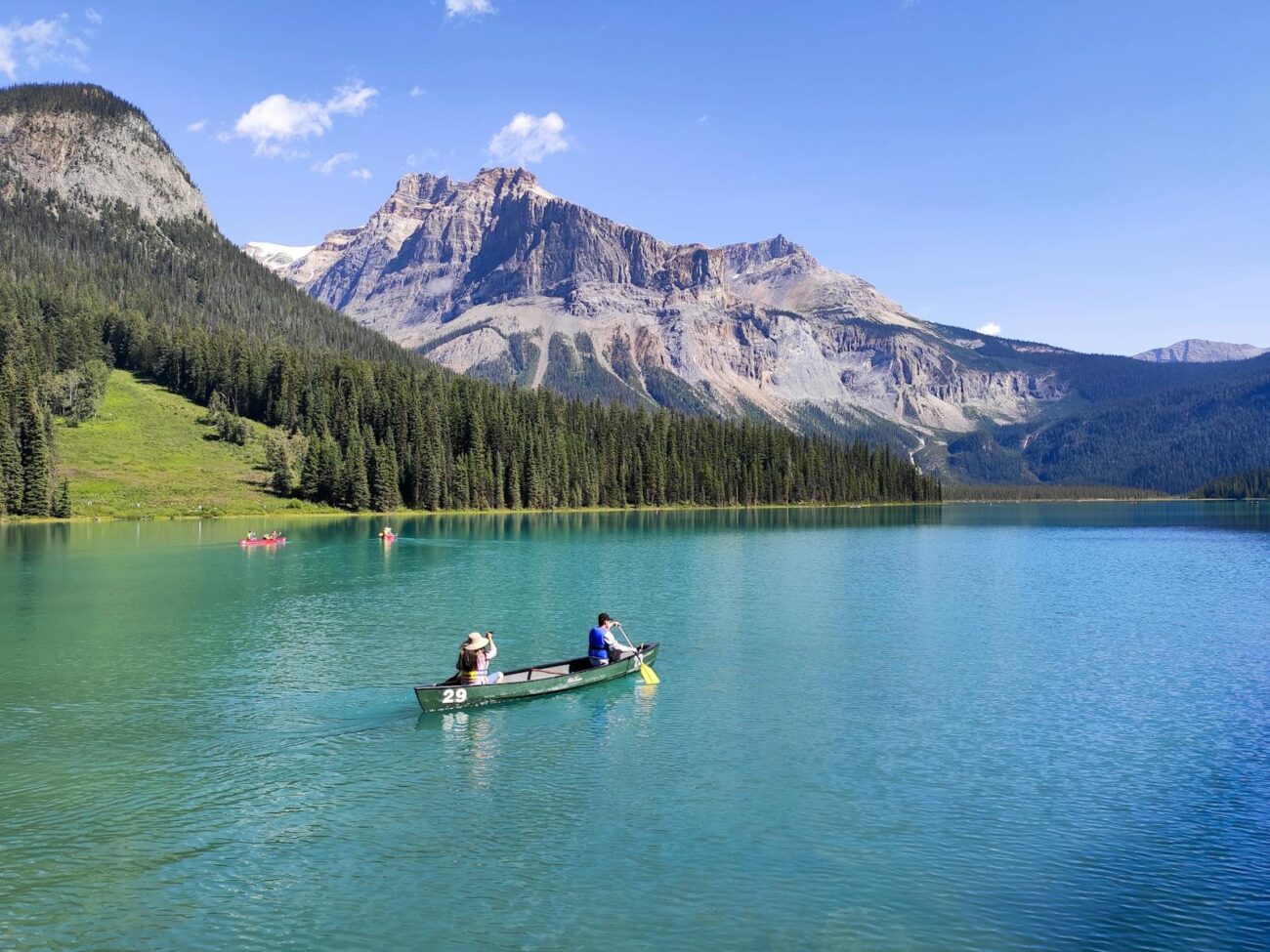Water has a way of calming the soul, and there’s perhaps no better way to experience America’s diverse waterways than by paddle. From tranquil lakes reflecting mountain peaks to gentle rivers winding through ancient forests, the United States offers paddling enthusiasts endless opportunities to connect with nature. Whether you’re an experienced kayaker seeking your next adventure or a beginner looking to dip your paddle for the first time, these 12 peaceful paddling routes across America promise unforgettable experiences, stunning scenery, and the perfect escape from everyday life. Pack your life vest, grab your paddle, and prepare to discover some of the most serene waterways our nation has to offer.
Boundary Waters Canoe Area Wilderness, Minnesota
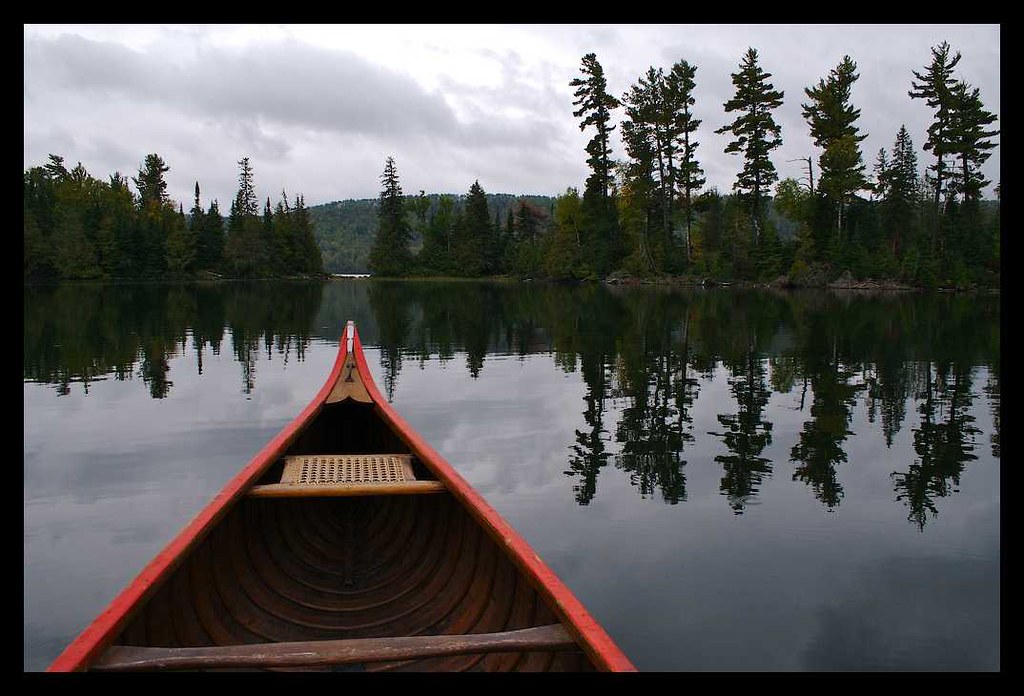
The Boundary Waters Canoe Area Wilderness in northern Minnesota offers over a million acres of pristine lakes, streams, and forests connected by portage trails. This paddler’s paradise contains more than 1,200 miles of canoe routes and over 2,000 designated campsites, making it the largest wilderness area east of the Rocky Mountains. Wildlife sightings are common, with paddlers frequently spotting moose, beavers, otters, and even the occasional wolf or black bear along the shoreline. The night skies here are among the darkest in the continental United States, offering spectacular stargazing opportunities after a day of peaceful paddling through crystal-clear waters.
Everglades National Park, Florida
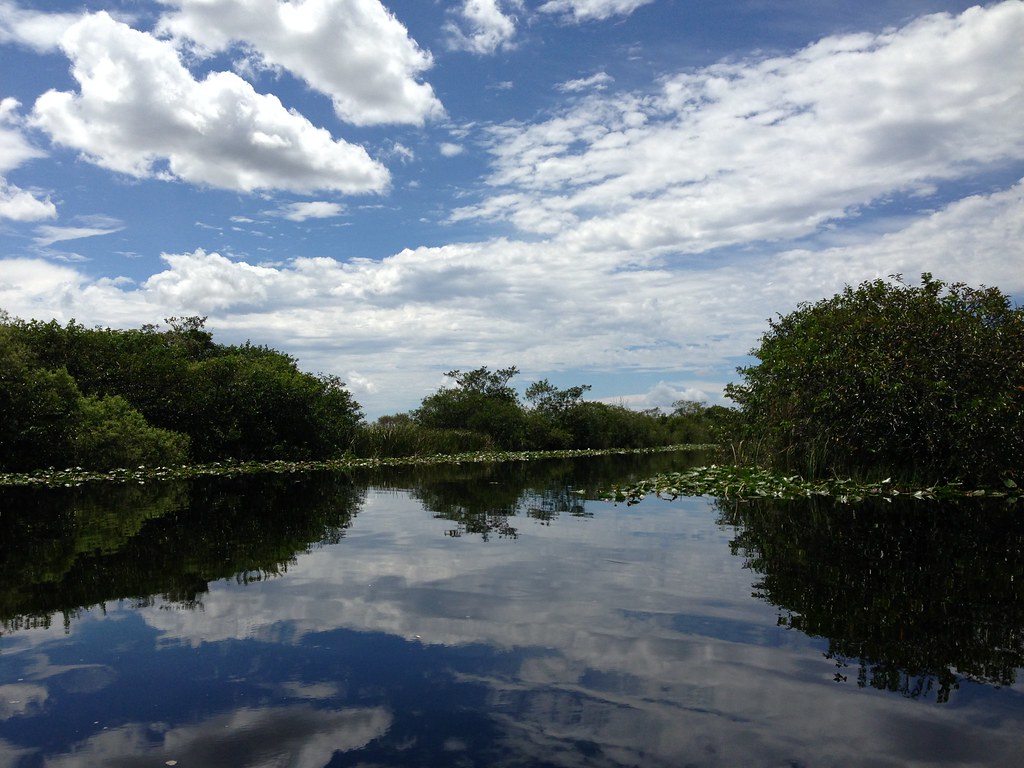
Florida’s Everglades National Park presents a unique paddling experience through North America’s largest subtropical wilderness. The park’s 99-mile Wilderness Waterway offers adventurous paddlers a multi-day journey through mangrove forests, sawgrass prairies, and coastal lagoons teeming with wildlife. Paddlers can spot alligators, manatees, dolphins, and over 360 species of birds while navigating this distinctive ecosystem. The Everglades are particularly magical during winter months (December through April) when temperatures are comfortable, bugs are minimal, and migratory birds enhance the already spectacular wildlife viewing opportunities.
San Juan Islands, Washington
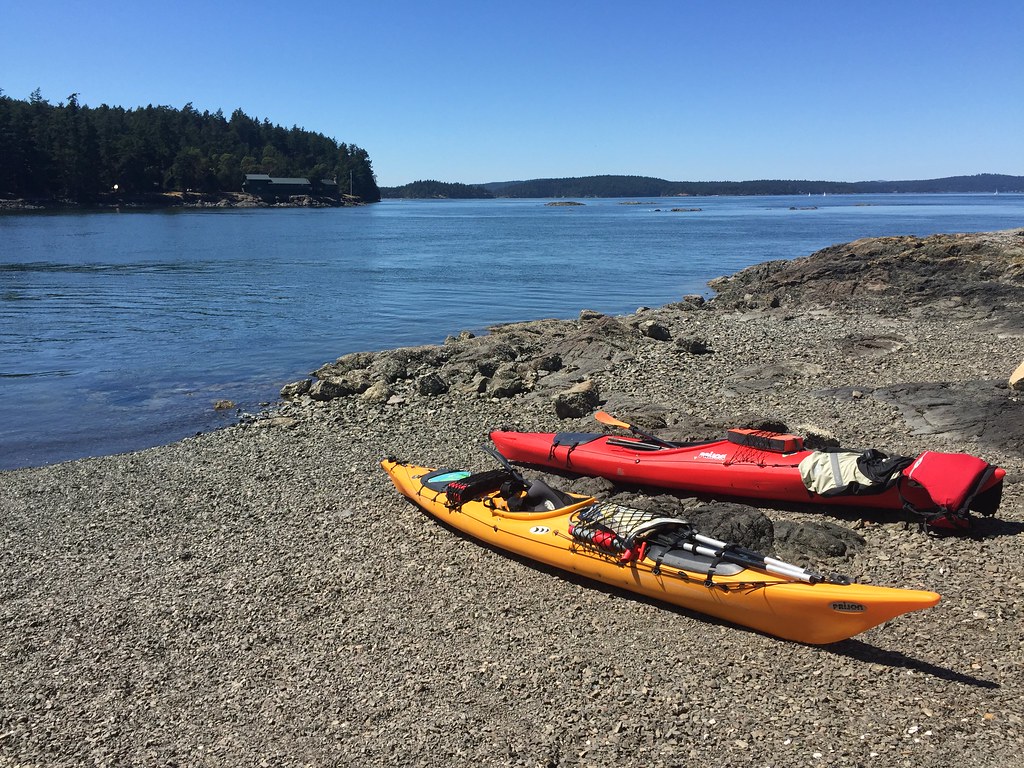
The San Juan Islands in Washington’s Puget Sound create a paddler’s playground with sheltered waterways, abundant wildlife, and stunning natural beauty. This archipelago of 172 named islands and reefs offers routes suitable for both day trips and multi-day expeditions, with opportunities to camp on several marine state parks. Lucky paddlers might spot the resident orca whales that hunt in these waters, along with seals, porpoises, and bald eagles that call this region home. The islands also boast charming small towns where paddlers can stop for local seafood, making this a perfect blend of wilderness adventure and coastal culture.
Buffalo National River, Arkansas
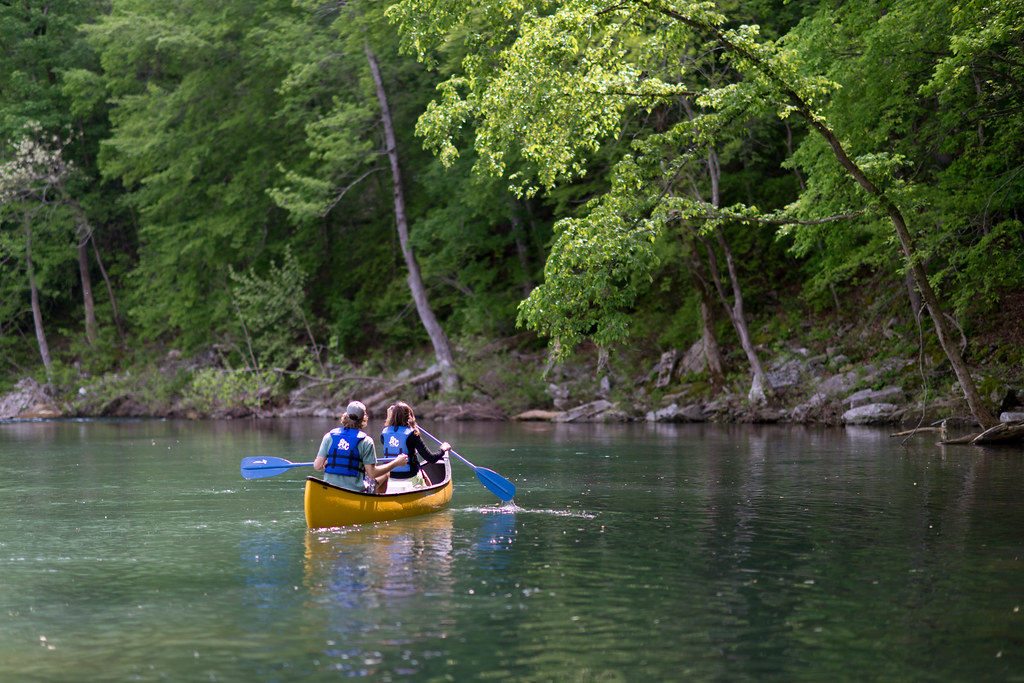
As America’s first designated National River, the Buffalo in Arkansas flows freely for 135 miles through the heart of the Ozarks without dams or man-made impoundments. The upper section offers more challenging paddling through dramatic limestone bluffs, while the middle and lower sections provide gentle floating perfect for beginners and families. Spring paddlers are treated to cascading waterfalls and vibrant wildflower displays along the riverbanks, while summer visitors can enjoy swimming in the crystal-clear pools that form along the river. The Buffalo’s pristine waters reflect towering bluffs that reach heights of over 500 feet, creating one of the most scenic paddling experiences in the country.
Lake Tahoe, California/Nevada
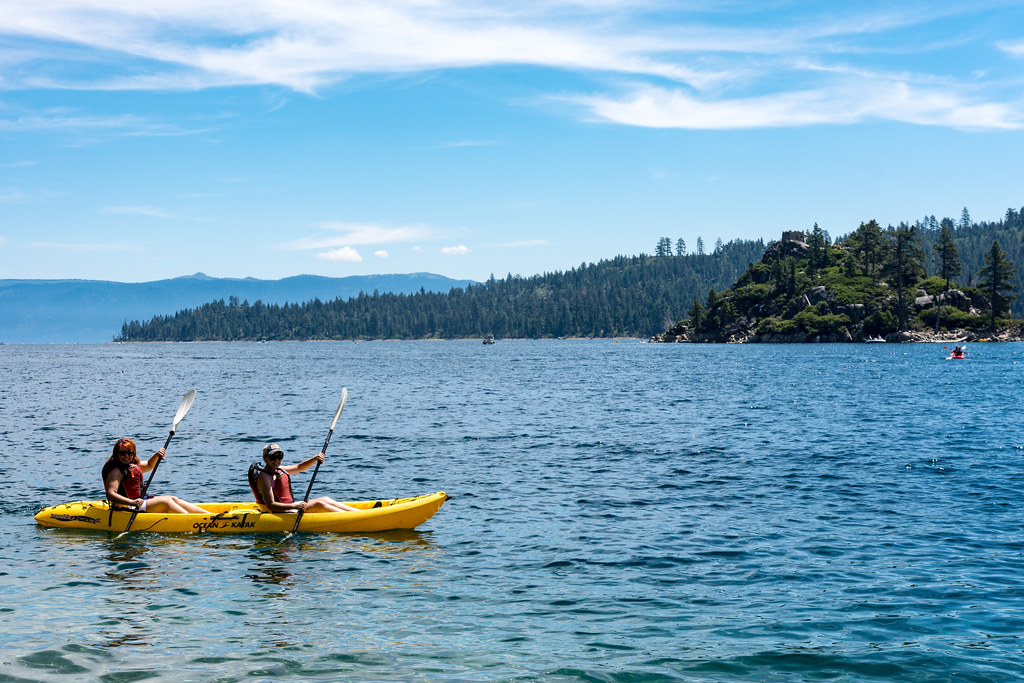
Straddling the California-Nevada border, Lake Tahoe offers paddlers a chance to glide across some of the clearest, bluest water in North America. This ancient alpine lake reaches depths of over 1,600 feet and is surrounded by the majestic Sierra Nevada mountains, creating breathtaking panoramic views in every direction. The lake’s east shore features a particularly stunning stretch known as “Boulder Beach,” where massive granite boulders create a dramatic landscape both above and below the waterline. Morning paddling is especially peaceful, offering glass-like conditions before the afternoon winds pick up and remarkable clarity that allows paddlers to see more than 70 feet into the depths on calm days.
Okefenokee National Wildlife Refuge, Georgia
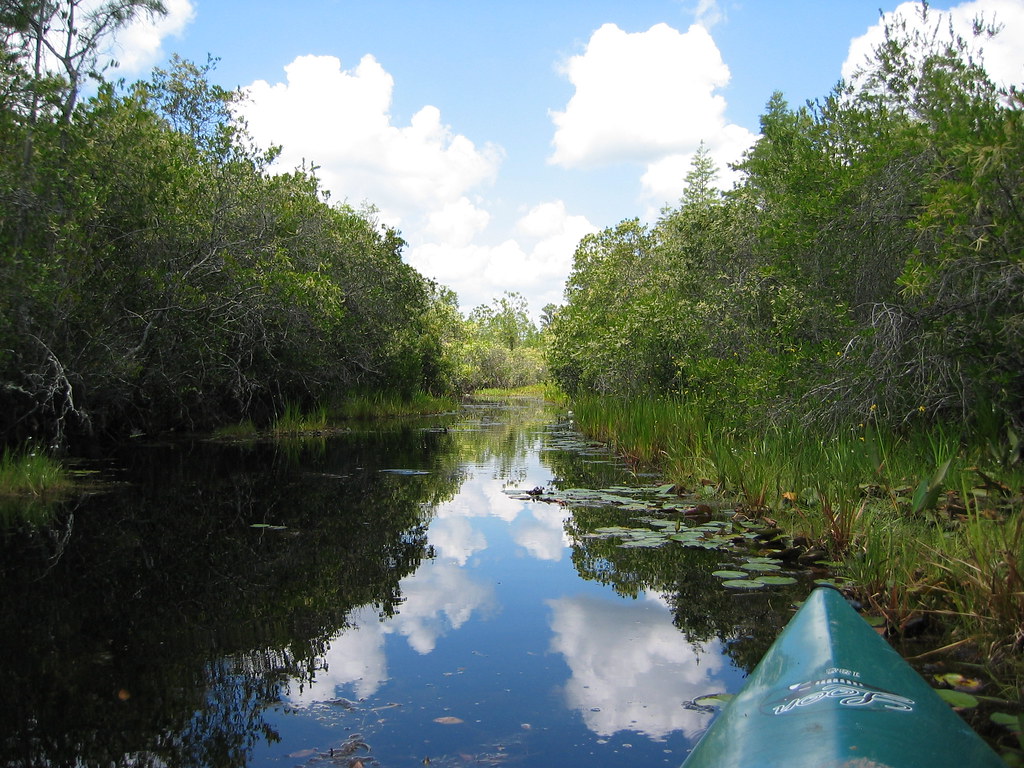
The Okefenokee Swamp presents an otherworldly paddling experience through one of America’s oldest and most well-preserved freshwater ecosystems. This vast wetland covers approximately 700 square miles and features clearly marked water trails winding through cypress forests draped with Spanish moss and expansive prairie landscapes. Paddlers navigate through tea-colored waters reflecting the tannic acid from decomposing vegetation, creating mirror-like surfaces that perfectly capture the surrounding wilderness. The refuge houses an extraordinary concentration of wildlife, including over 200 bird species, countless alligators, and rare species like the endangered red-cockaded woodpecker, offering nature enthusiasts unparalleled wildlife viewing opportunities from the quiet vantage point of a canoe or kayak.
Deschutes River, Oregon
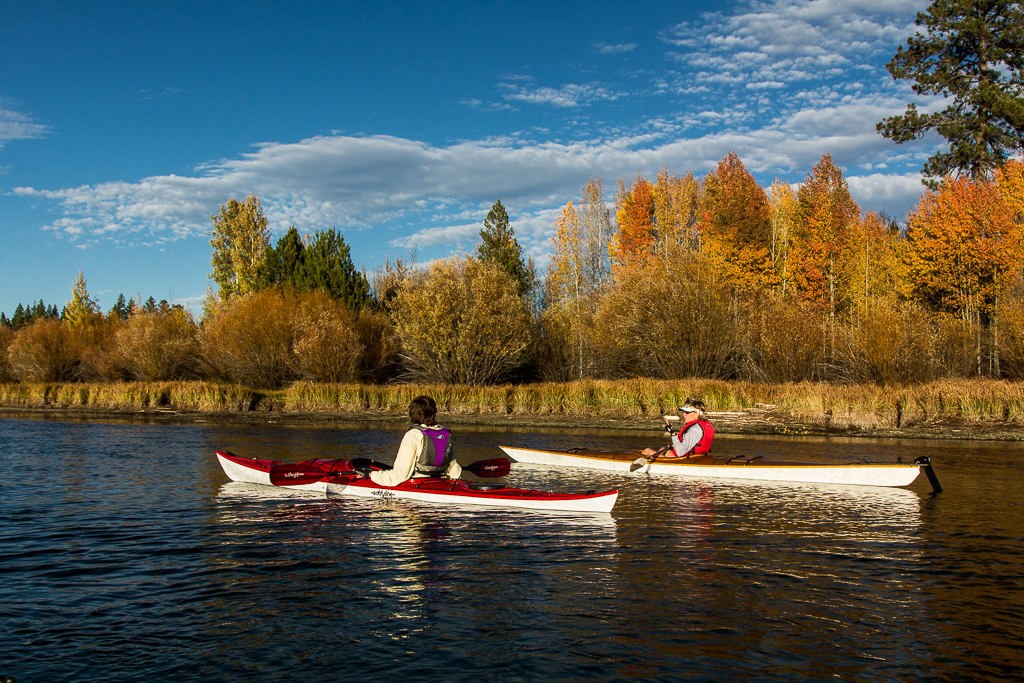
Oregon’s Deschutes River offers paddlers a desert oasis experience as it flows through the high desert landscape of central Oregon. The Big Eddy to Bend section provides a perfect day trip with calm waters interrupted by occasional gentle rapids, making it suitable for paddlers of various skill levels. Wildlife is abundant along the riverbanks, with golden eagles soaring overhead and mule deer often spotted coming to drink at the water’s edge. The clear waters of the Deschutes are renowned for excellent fishing, allowing paddlers to combine their water journey with fly fishing for native redband trout that thrive in this pristine river system.
Current River, Missouri
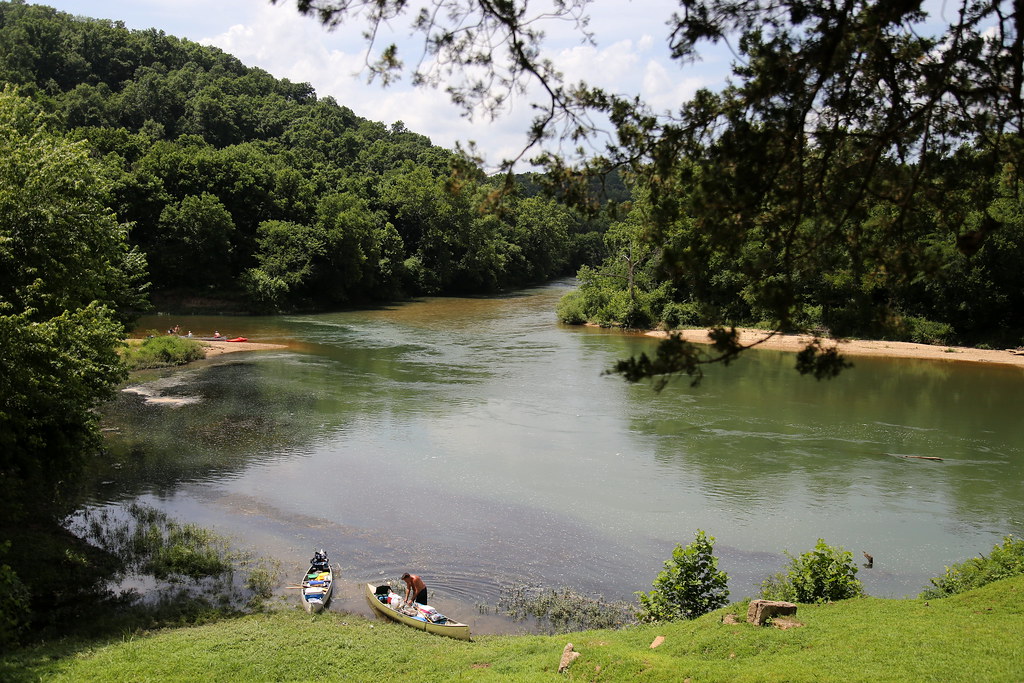
The Current River in Missouri’s Ozark National Scenic Riverways flows crystal clear and cool year-round, fed by some of America’s largest freshwater springs. Paddlers enjoy easy floating conditions perfect for beginners and families, with numerous access points allowing trips of various lengths. The river maintains a consistent temperature of around 58 degrees thanks to the cold spring water that feeds it, creating refreshing paddling conditions even during hot summer months. Historic mills, caves, and natural springs dot the riverside, offering interesting stops during a paddling journey, including the iconic Big Spring which pumps over 286 million gallons of water into the river daily.
Eleven Point National Scenic River, Missouri
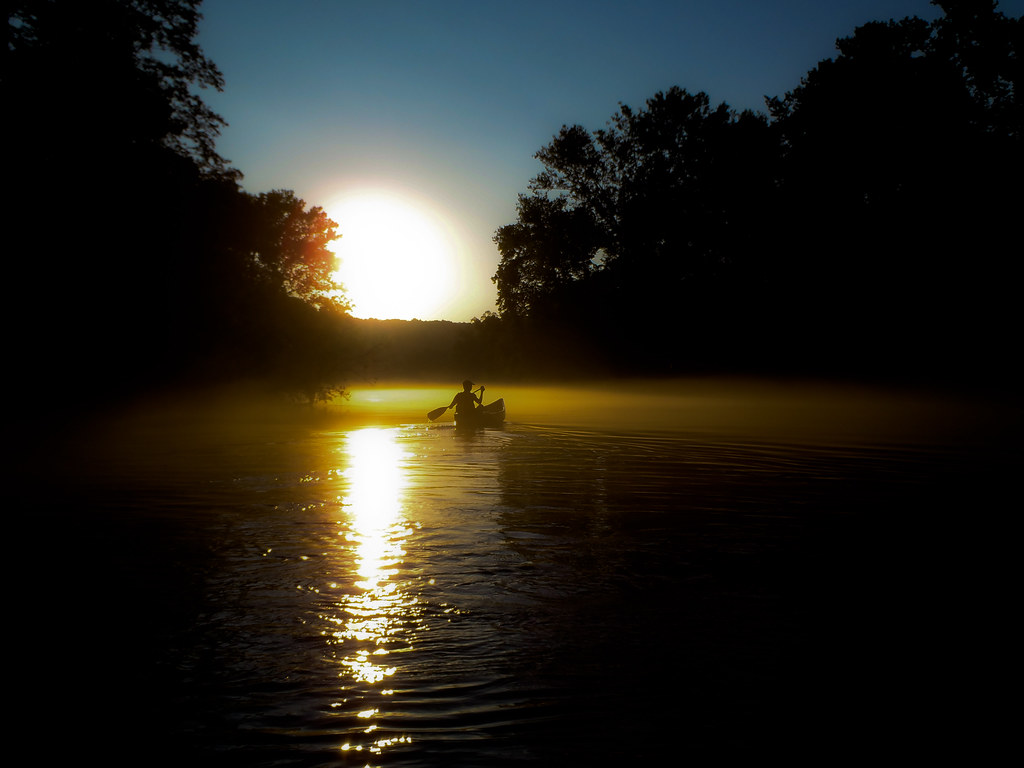
Another gem in Missouri’s Ozarks, the Eleven Point National Scenic River offers a more secluded paddling experience with fewer visitors than its neighboring Current River. This spring-fed river flows through a remote, rugged landscape of limestone bluffs and pine-oak forests that create a sense of wilderness isolation rarely found in the Midwest. The river features class I and II rapids interspersed with peaceful pools, providing enough variety to keep paddlers engaged without being overly challenging. Greer Spring, the second-largest spring in Missouri, dramatically doubles the river’s volume where it enters, creating a noticeable change in the current and water clarity that paddlers can observe firsthand.
Green River through Labyrinth Canyon, Utah
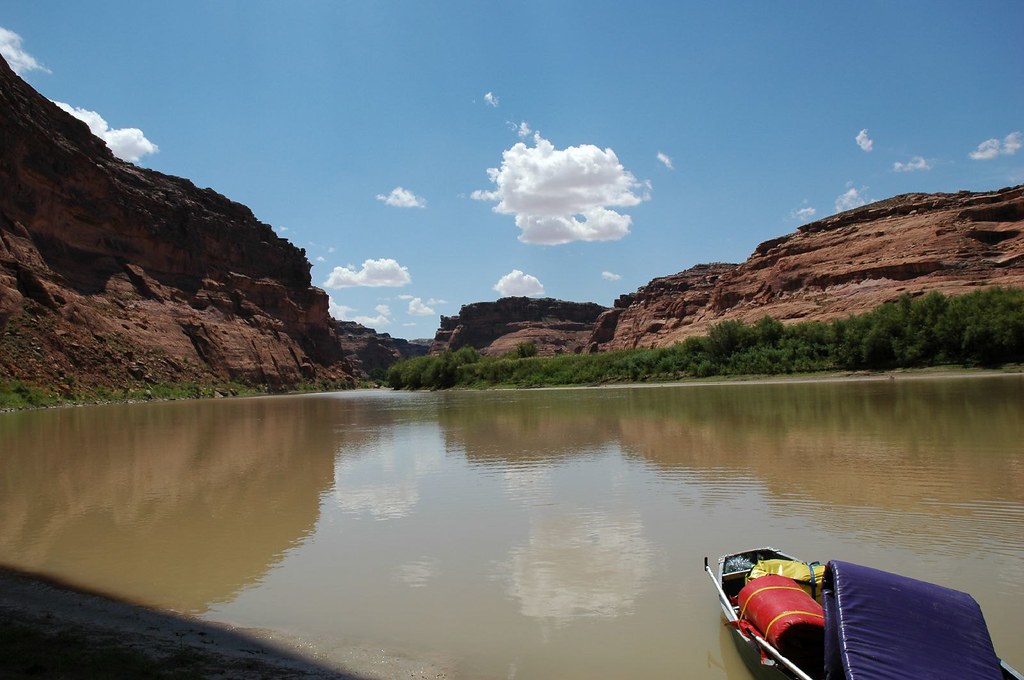
Utah’s Green River through Labyrinth Canyon offers paddlers an opportunity to float through a spectacular desert landscape carved by millions of years of erosion. This 68-mile stretch requires no permits and features calm flatwater perfect for canoes and kayaks, making it accessible to paddlers with basic skills and camping experience. The canyon walls rise 1,500 feet above the river in places, displaying colorful layers of sandstone that tell the geological history of the Colorado Plateau. Ancient petroglyphs and inscriptions from early explorers can be spotted along the canyon walls, adding cultural interest to the incredible natural beauty of this remote desert paddling route.
Wailua River, Kauai, Hawaii
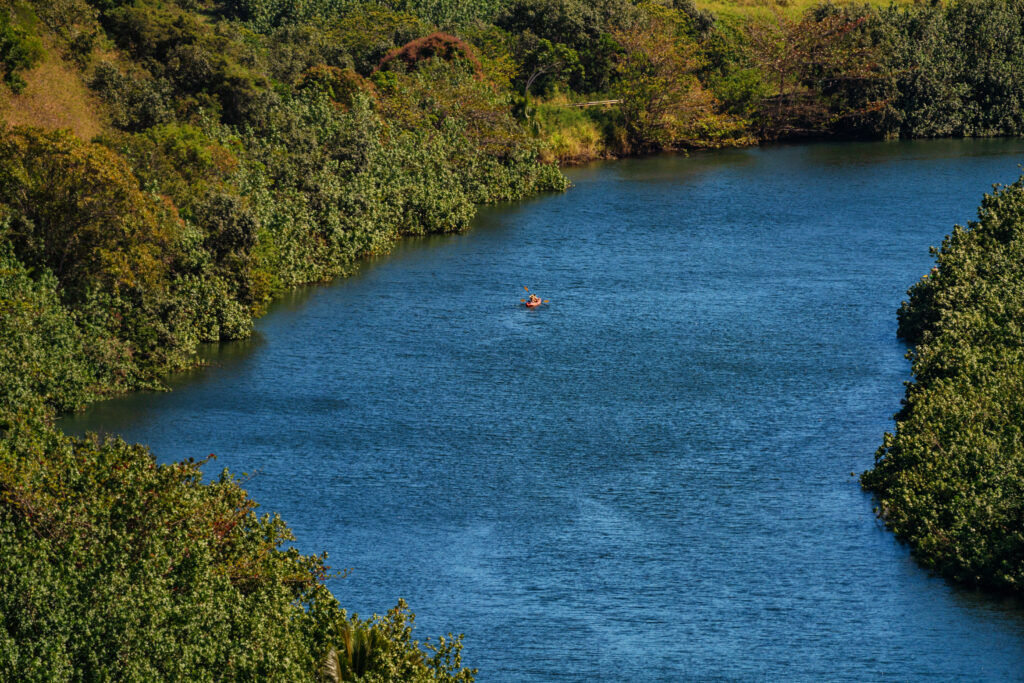
Hawaii’s Wailua River on the island of Kauai offers paddlers a tropical paradise experience through lush rainforest landscapes. This gentle river is the only navigable waterway in Hawaii, making it a unique paddling opportunity in the island state. The journey takes paddlers past sacred Hawaiian sites to the famous Fern Grotto, a lava rock cave draped with hanging ferns and tropical foliage. The river flows from the central mountains of Kauai toward the eastern shore, allowing paddlers to experience both the island’s interior rainforest ecosystem and coastal environments in a single journey.
St. Croix River, Wisconsin/Minnesota
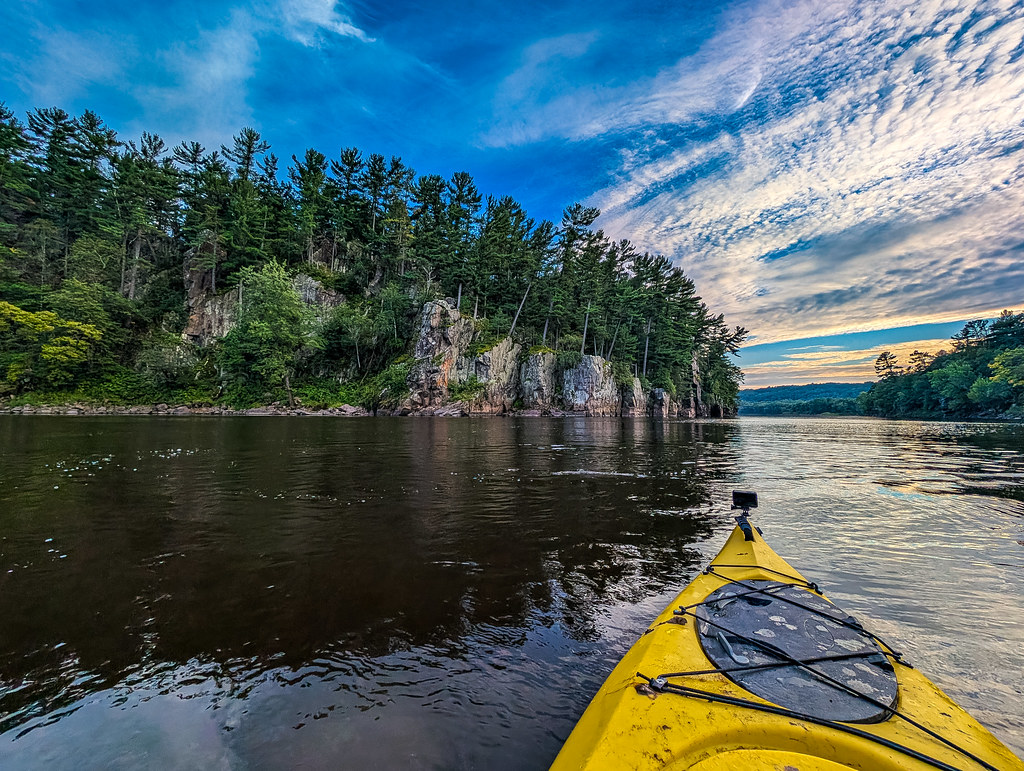
The St. Croix National Scenic Riverway preserves 252 miles of river corridor along the Wisconsin-Minnesota border, offering paddlers diverse experiences from intimate forest settings to broader valley views. The upper reaches provide a more remote wilderness feel, while the lower sections feature dramatic rock formations including the Interstate Park dalles, where the river cuts through ancient basalt. The river’s healthy ecosystem supports over 100 fish species and abundant wildlife, with nesting bald eagles commonly spotted along the forested banks. Fall paddling is particularly spectacular when the maple and oak forests lining the riverbanks explode with vibrant autumn colors, creating a kaleidoscope of reflections on the water’s surface.
America’s waterways offer endless opportunities for peaceful exploration, personal reflection, and connection with nature. From the ancient cypress swamps of Georgia to the crystal-clear alpine lakes of the Sierra Nevada, paddling allows us to experience landscapes from a unique perspective—at water level, moving at nature’s pace. These 12 routes represent just a small sample of the incredible paddling experiences available across the United States, each offering its own distinct ecosystem, wildlife viewing opportunities, and natural beauty. Whether you’re seeking solitude, adventure, or simply a new way to experience familiar landscapes, these paddling routes promise memories that will last a lifetime and perhaps spark a lifelong passion for exploring America’s waterways one paddle stroke at a time.

